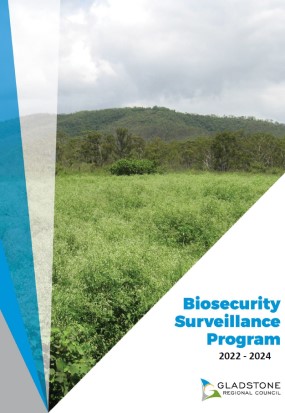Living Here
Council redesigns its Biosecurity Surveillance Program

GRC has modified the way it conducts its Biosecurity Surveillance Program to monitor compliance of landholders with restricted and prohibited matter in accordance with the Biosecurity Act 2014 (Qld).
Previous programs ran from 1 May 2021 to 30 October 2021 (winter) and 30 November 2021 until 30 April 2022 (summer).
The winter and summer Biosecurity Surveillance Programs will now be combined and undertaken over a two-year period, commencing 1 July 2022 until 31 May 2024.
Gladstone Region Councillor and Capricorn Pest Management Group committee member Chris Cameron said the aim of the updated program remained the same – to monitor the presence, absence and compliance with requirements regarding biosecurity matter.
“Species include the African tulip tree, bellyache bush, giant rat’s tail grass, groundsel bush, Harrisia cactus, mesquite, parkinsonia, parthenium, prickly acacia, prickly pear spp. and rubber vine,” Councillor Cameron said.
“Council officers will conduct property inspections to monitor controlled actions for the management of invasive species in accordance with the Biosecurity Act 2014 and Council’s Biosecurity Plan.”
Cr Cameron said landholders and residents have a general biosecurity obligation (GBO) to ensure their actions or activities do not spread a pest, disease, or contaminant.
“Gladstone Region landholders are responsible for managing pest species and must take all reasonable and practical steps to prevent or minimise each biosecurity risk,” he said.
“It is integral that Council monitors these pests and measures the effectiveness of control methods implemented by landholders.”
Visit www.gladstone.qld.gov.au/biosecurity to read more about Council’s Biosecurity Surveillance Program 2022-2024.
See Also








